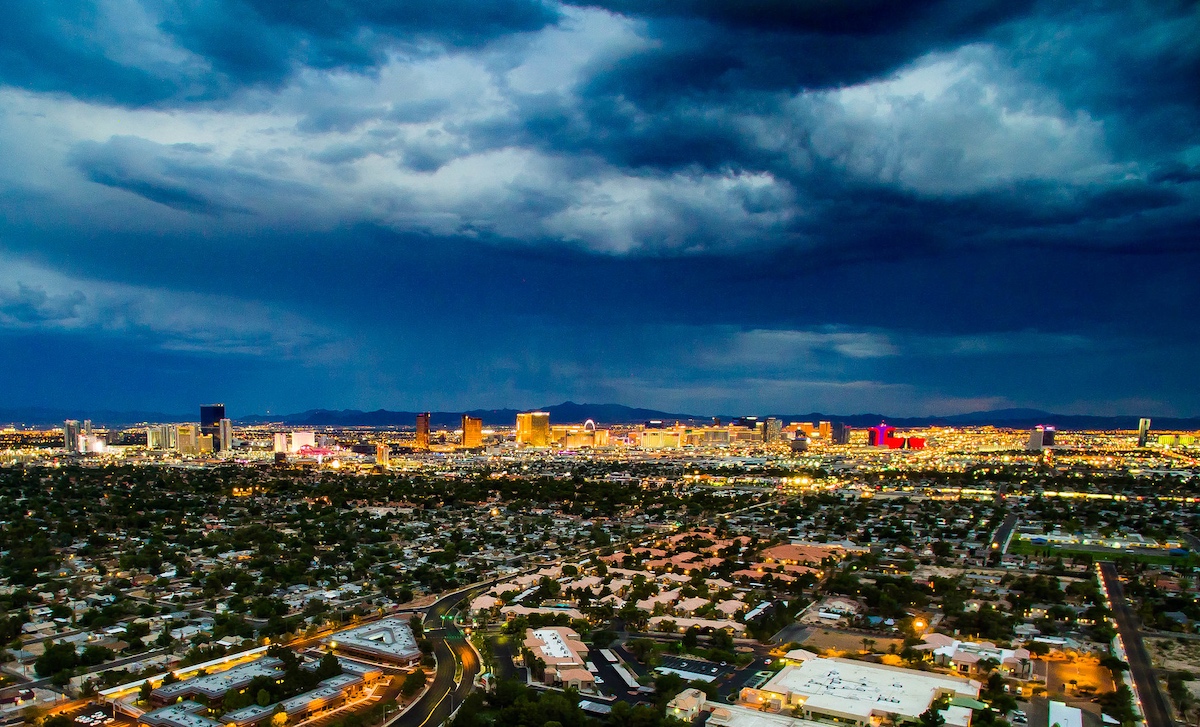At first glance, there doesn’t appear to be any rhyme or reason that ties the dark red dots on the US Department of Labor Statistics’ latest employment map.
Amid the national unemployment rate hitting a new low since the start of the pandemic, the map shows the metro areas that have had the most positive change in nonfarm employment from February 2021 to February 2022.
Areas that are in the 10%-plus range (very high) include Atlantic City-Hammonton, New Jersey (14.7%), Bloomington, Indiana (9.5%), Midland, Texas (9.7%), Las Vegas-Henderson-Paradise, Nevada (12.7%), Santa Fe, New Mexico (10.8%) and Kahului-Wailuku-Lahaina, Hawaii (12.9%).
A couple of the rapid growth metros — Las Vegas and Kahului, especially — are areas with a big tourism industry and a large number of jobs in hospitality, the sector hardest hit by the pandemic. But that’s not true for all of them. Atlantic City went into the pandemic struggling to expand gaming due to blight. Bloomington is a small heartland city where Indiana University is by far the largest employer. Midland is a growing oil and gas town with a major aerospace presence. Santa Fe draws its share of tourists, but it’s really a biotech town.
These booming metros are spread out across the US and have varying climates, cultures and demographics:

Change in nonfarm employment by metropolitan area, February 2021 to February 2022, not seasonally adjusted. (Chart via BLS)
But they do have some things in common.
None of them are big cities.
Big cities are seeing growth, but at a slower clip: New York City, Chicago, Philadelphia, Miami and Los Angeles are all in the 5% to 7% growth neighborhood. (Encouragingly, though, brand-new BLS data says employment is up in nearly 50 of the country’s largest metro areas over the same year.)
Actually, they’re all college towns.
“College town” might not be the first thing you think of when you think of Las Vegas or Atlantic City, but these metros all have a prominent college or university. Kahului, which is a less touristy, more “lived in” part of Maui, is home to University of Hawaii Maui; Hammonton has Stockton University; Santa Fe has Southwestern and St. John’s; Texas Tech has a health sciences campus in Midland; University of Nevada is based in Las Vegas; and of course, Bloomington is the home of Indiana University.
Colleges and universities were kept afloat by CARES Act funding in 2021 and are major employers in smaller college towns, making this commonality a possible factor.
They’re growing, but could use a little revitalization.
Granted, it’s probably fair to say that most metro areas are in need of some revitalization and were before the pandemic. But where revitalization is needed, COVID-19 grant money has increased the amount and accessibility of aid for improvements, especially for restaurants and other small businesses. Couple that with the infrastructure package signed by President Joe Biden this year, and smaller cities with revitalization plans will see the impact of new job-creating projects.
The other end of the spectrum.
Where is growth the slowest? That’s slightly easier to eyeball, looking at the data.
For the most part, metros where employment growth is slow (2.2% or lower) are located within the eastern half of the 48 contiguous states, divided pretty evenly between north and south, with slightly fewer on the East Coast. They include Portland, Maine (1.3%), Virginia Beach (1.6), Lawton, Oklahoma (0%), Ithaca, New York (-0.7%) and Houma-Thibodaux, Louisiana (-2.1%). These metros, too, are varied and include a couple of smaller tourist destinations and one college town (Ithaca).
Their biggest common denominator is that they’re not in the western part of the country, where the data shows fewer 9%+ rapid growth metros, but also, almost none of the slowest metros.
Is the talent pool keeping up with the rate of new jobs?
States that are struggling the most in hiring, which is a different data set compiled by WalletHub, include some of the country’s least metropolitan states: Alaska, Vermont, Wyoming, New Hampshire and Montana. This is despite the fact that more companies are hiring remote employees and more workers are largely migrating away from large cities. As companies acclimate more to hiring outside of their local areas, the struggle may lessen, if companies in these states can offer competitive pay.
By contrast, those that are struggling the least are the District of Columbia, Washington, Delaware, New York and Kansas.
Before you go...
Please consider supporting Technical.ly to keep our independent journalism strong. Unlike most business-focused media outlets, we don’t have a paywall. Instead, we count on your personal and organizational support.
Join our growing Slack community
Join 5,000 tech professionals and entrepreneurs in our community Slack today!

The person charged in the UnitedHealthcare CEO shooting had a ton of tech connections

Delaware students take a field trip to China using their tablets and ChatGPT

From rejection to innovation: How I built a tool to beat AI hiring algorithms at their own game


